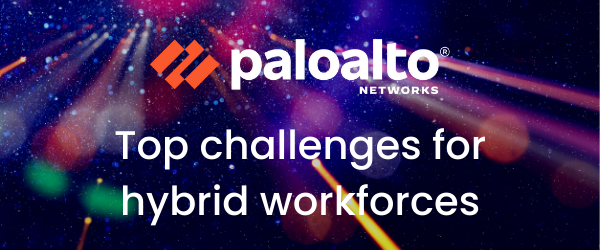
2020 changed how and where we work for good. In response to a global pandemic, organizations of all shapes and sizes underwent massive transformations to shift their employees from primarily working in offices to working from home. 2020 also accelerated the move to digital transformation, enabling IT teams to ensure that infrastructure and resources essential for work scaled and remained available everywhere employees were now located. Trends that were already in motion, such as cloud adoption and network modernization, became accelerated and compressed.
While the rapid transition to remote work went reasonably well for employees, aligning security tools and techniques to this new model of work was too often not a top priority. Some of the challenges associated with modernization include:
- Traffic patterns and mixes: The global distribution of applications and services that organizations rely upon requires fast, reliable, and secure access for their users. Current web security and proxy-based solutions only look at web-based applications and protocols, providing limited coverage and leaving organizations vulnerable to security threats.
- Increased complexity: The typical business approach of bolting-on a plethora of point-products to address changing market, customer and employee needs is not optimal.
- Inconsistent and suboptimal experiences: Users accessing resources from remote locations are often granted different access to protected data compared to corporate offices.
- Security efficacy: Traditional standalone virtual private networks (VPNs) as well as many of the emerging cloud-based solutions do have strong cybersecurity pedigrees. As a result, these solutions do not provide advanced threat or vulnerability detection, leaving privileged resources vulnerable to user account compromise.
Organizations are looking for solutions that converge networking and security capabilities into a single service to simplify their management and operations. To counter increasingly sophisticated threats, and to consolidate existing security products, organizations need a solution that provides advanced threat protection that includes machine learning-powered security, behavior based intrusion detection, as well as data-loss prevention without increasing complexity or impacting user experiences. A Secure Access Service Edge (SASE) can solve the challenges for this new hybrid workforce.
Palo Alto Networks offers organizations the industry’s most comprehensive SASE solution. As organizations transition to a cloud-delivered network security model, their natively-integrated Prisma Access and Prisma SD-WAN solutions provide both the security and uninterrupted connectivity needed to support a hybrid workforce. Prisma Access solves the limitations of alternative approaches and offers customers the industry’s most complete cloud-delivered security platform.
Read Don Meyer’s full blog here or contact your local Exclusive Networks Account Manager to learn more about solving the top challenges for hybrid workforces with the Palo Alto Networks Secure Access Service Edge (SASE).


